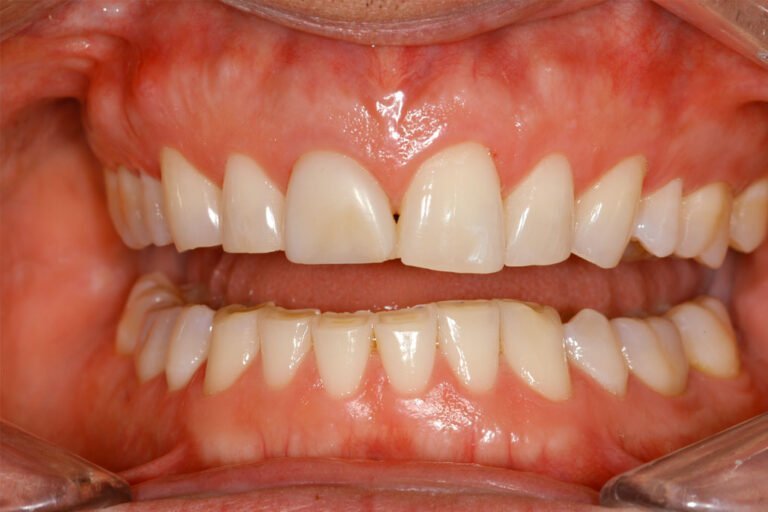Replacing teeth has greatly improved recently. Missing teeth can lead to infection, but the right replacement is key for a confident smile. Now, you should ask your dentist these questions:
- How does a dental bridge differ from an implant?
- Which treatment option is better for me?
Dental Implants vs Dentures
If you’re missing many or all of your teeth, you might have heard about getting dentures.
Traditional dentures can make your smile look good again and help support your face muscles. But they have downsides too. Since they sit right on the gums, they don’t have solid support. Without tooth roots, your gums and jawbone don’t get the needed stimulation to stay strong.
It’s not rare for people with dentures to see bone loss, shrinking gums, and changes in their face shape. If this happens, you may need to resize your dentures and could be at risk for gum disease.
Other disadvantages of dentures can include:
- Slipping and sliding
- Gum irritation
- Minimal chewing support
- Impaired talking ability
- Embarrassing clicking or sucking noises
- Reduced food taste
These implants give your dentures something to hold onto, which helps you chew and keeps them stable.
Often, you can take these dentures out to clean them easily. They help prevent bone loss and gum disease, and they make eating and speaking smoother.
If you’re missing lots of teeth, or have several gone in a row, replacing each one with a dental implant might be too expensive. Instead, dentists often use implants to anchor dentures or a dental bridge in place.
Dental Implants vs Dental Bridge
A dental bridge is a common solution for a row of missing teeth.
In many cases, the teeth adjacent to the gap are shaved down and fitted with dental crowns, which act as anchors for the row of artificial teeth between them.
Like a traditional dentures, a dental bridge rests over the top of the gums, leaving the underlying gums and bone to eventually deteriorate without proper stimulation.
As the jawbone weakens and the gums recede, the dental bridge can begin to slide and cause irritation. Plaque can easily creep into the space between the gum and dental bridge, creating a risk for periodontal disease, additional tooth loss, and other oral health issues.
Implant-supported dental bridges provide a longer-term and healthier solution for tooth replacement.
Instead of having to reshape the adjacent healthy teeth, one or more dental implants are positioned into the gums to function like tooth roots. These dental implants attach to the dental bridge, creating chewing support and preventing bone or gum loss.
In addition, implant-supported dental bridges are slip resistant since they are attached firmly to the implants.
Being a Patient at Austin Avenue Dental
If you have any more questions or concerns regarding which dental treatment is best for your situation, there are multiple ways to reach us:
- Simply give us a call at (604) 420-2545;
- Fill out our appointment form; or
- Drop by our dental office as we are always happy to accept new patients.







